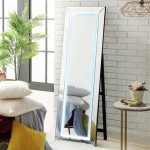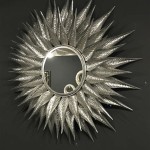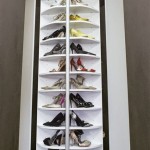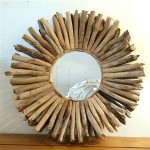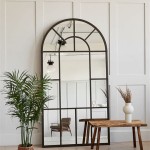What Is an Antique Mirror?
An antique mirror is more than just an old reflective surface. It represents a piece of history, reflecting both the craftsmanship of a bygone era and the passage of time itself. Defining a mirror as "antique" requires more than simply acknowledging its age. Authentic antique mirrors possess specific characteristics that distinguish them from vintage or merely old mirrors.
Generally, a mirror is considered antique if it is at least 100 years old. This benchmark signifies a connection to a historical period and often reflects manufacturing techniques no longer in widespread use. However, age alone is not the sole determinant. The mirror's construction, materials, and overall style also play crucial roles in its classification as an antique.
One of the most distinctive features of antique mirrors is the presence of imperfections in the glass. Prior to the modern float glass process, which creates a perfectly smooth and uniform surface, glass was manufactured using techniques that resulted in subtle distortions and irregularities. These imperfections, often referred to as "silvering" or "foxing," manifest as darkened spots, streaks, or a hazy appearance across the glass surface. While some might view these imperfections as flaws, they are considered hallmarks of authenticity and contribute to the antique mirror's unique character and charm.
The silvering process itself is a key element in identifying antique mirrors. Early mirrors utilized a mixture of mercury and tin to create the reflective backing. This method, known as mercury silvering, produced a warm, slightly distorted reflection that differs significantly from the crisp, clear reflection of modern mirrors. Over time, the mercury silvering can deteriorate, leading to the characteristic foxing and spotting mentioned earlier. Later antique mirrors might employ silver nitrate backing, which is generally more stable but still exhibits different aging characteristics compared to modern aluminum-backed mirrors.
The materials used in the mirror's frame also contribute to its antique status. Frames were typically crafted from high-quality materials such as wood, often elaborately carved or gilded. Other materials like ebony, walnut, mahogany, or ornate plasterwork were also common. The frame's style reflects the prevailing artistic trends of the period in which it was made, offering clues to the mirror's age and origin. Examining the frame's construction techniques, joinery methods, and any signs of restoration can offer further insight into its authenticity and history.
The size and shape of an antique mirror can also be indicative of its age and intended use. Early mirrors were often smaller due to the limitations of glass manufacturing techniques. Larger mirrors became more prevalent as technology advanced. The shape and size of a mirror can also reveal its intended function. Small, handheld mirrors served personal grooming purposes, while large, ornate mirrors were often designed as decorative centerpieces in grand interiors.
Distinguishing between an antique mirror and a vintage or reproduction mirror requires careful observation and knowledge. Vintage mirrors are generally defined as being less than 100 years old but possessing characteristics that reflect a specific historical period. Reproductions, on the other hand, are contemporary pieces designed to mimic the appearance of antique mirrors. While reproductions can be aesthetically pleasing, they lack the historical significance and inherent imperfections that define true antique mirrors.
The value of an antique mirror depends on several factors, including its age, condition, rarity, and historical significance. Mirrors with documented provenance, such as those originating from prominent estates or with connections to historical figures, often command higher prices. The presence of original silvering, even with some foxing, can also increase a mirror's value, as it attests to its authenticity. The quality and craftsmanship of the frame, as well as the overall condition of the mirror, also play a significant role in determining its market value.
Caring for an antique mirror requires a gentle approach. Avoid using harsh cleaning chemicals, which can damage the delicate silvering and frame. Dusting with a soft, dry cloth is usually sufficient. For more thorough cleaning, consult a professional specializing in antique mirror restoration. Proper storage and handling are also essential for preserving the integrity of an antique mirror. Avoid exposing the mirror to excessive humidity, temperature fluctuations, and direct sunlight, as these factors can contribute to deterioration.
Acquiring an antique mirror involves more than simply purchasing a decorative object. It represents an investment in history, craftsmanship, and a tangible connection to the past. Whether displayed as a focal point in a room or incorporated as a subtle accent, an antique mirror adds a unique depth and character that enhances any environment. The subtle imperfections, the warm reflection, and the echoes of bygone eras combine to create a piece that transcends mere functionality and becomes a work of art in its own right.

Antique Mirrors A Guide To Identifying Collecting

The Ultimate Guide On Diy Antique Mirrors So Much Better With Age

An Introduction To Antique Mirrors Pioneer Glass

What To Consider When Antique Mirrors Hemswell Centres

An Antique Mirror What You Need To Know The Honeycomb Home

The Ultimate Guide On Diy Antique Mirrors So Much Better With Age
Antique Mirrors A Buyers Guide Nimbus Antiques

Where To Find Antiqued Mirror September 2024 Your Guide

Antique Mirror With Cloudy Pattern Custom Hand Made Antiqued

Verrage Glass Antique Mirror

